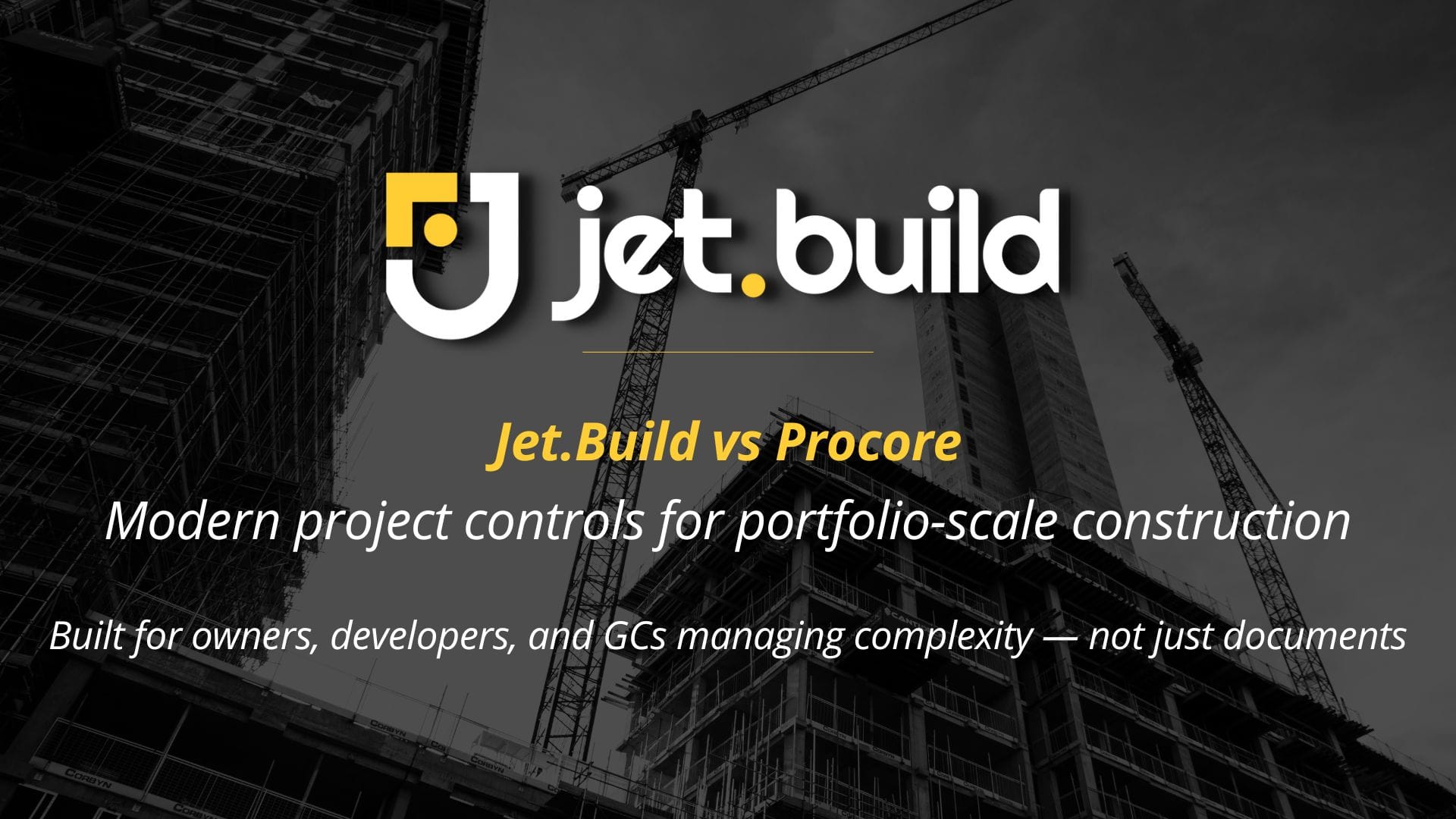Introduction
Construction projects are inherently complex and fraught with risks. The challenges are manifold, from delays and cost overruns to safety hazards and compliance issues. Effective project management is crucial to navigating these complexities and ensuring successful project outcomes. Project management software is one of the most powerful tools at the disposal of construction managers today. This blog post explores how project management software mitigates risks in construction projects, enhancing efficiency, safety, and profitability.
Understanding the Risks in Construction Projects
Before delving into how project management software mitigates risks, it's essential to understand the types of risks typically encountered in construction projects. These risks can be broadly categorized into several types:
- Financial Risks: These include budget overruns, cash flow problems, and unexpected expenses.
- Schedule Risks: Delays due to unforeseen circumstances, such as weather conditions, supply chain issues, or labor shortages.
- Safety Risks: Accidents and injuries on the construction site, leading to potential legal liabilities and project delays.
- Quality Risks: Issues related to the quality of materials or workmanship can result in rework and increased costs.
- Compliance Risks: Non-compliance with local regulations, building codes, and environmental standards, which can lead to fines and project shutdowns.
- Stakeholder Risks: Miscommunication and misalignment among stakeholders lead to disputes and project disruptions.
How Project Management Software Mitigates Risks
Project management software offers tools and functionalities designed to address these risks effectively. Here's a comprehensive look at how these tools mitigate various types of risks in construction projects.
1. Enhanced Planning and Scheduling
One of the primary causes of delays and cost overruns in construction projects is inadequate planning and scheduling. Project management software provides robust tools for creating detailed project plans and schedules. Here's how it helps:
- Task Scheduling and Sequencing: Software tools allow project managers to create detailed task lists, assign resources, and define dependencies. This helps ensure that tasks are completed in the correct order and that resources are available when needed.
- Critical Path Method (CPM): Many project management software solutions include CPM functionality, which helps identify the sequence of crucial tasks that determine the project duration. This allows managers to focus on tasks that have the most significant impact on the project timeline.
- Gantt Charts: Visual tools like Gantt charts provide a clear overview of the project schedule, making tracking progress and identifying potential delays easier.
Project management software facilitates meticulous planning and scheduling, reducing the likelihood of schedule risks and helping keep the project on track.
2. Improved Resource Management
Effective resource management is vital for the successful execution of construction projects. Project management software provides tools to manage both human and material resources efficiently:
- Resource Allocation: Software tools help allocate resources based on availability and project requirements, ensuring that no resource is overburdened or underutilized.
- Inventory Management: Effectively managing materials and equipment is crucial to avoiding delays. Project management software can track inventory levels, manage procurement processes, and ensure timely materials delivery.
- Labor Management: Tools for tracking labor hours, managing shifts, and ensuring compliance with labor regulations help optimize workforce productivity and reduce the risk of labor-related delays.
By optimizing resource management, project management software minimizes the risk of resource-related delays and cost overruns.
3. Enhanced Communication and Collaboration
Effective communication is critical in construction projects, where multiple stakeholders, including architects, engineers, contractors, and clients, need to stay aligned. Project management software facilitates seamless communication and collaboration through:
- Centralized Communication: A centralized communication platform ensures all stakeholders access the same information. This reduces the risk of miscommunication and ensures everyone is on the same page.
- Document Management: Project management software allows the centralized storage and sharing of project documents, drawings, and specifications. This ensures that all stakeholders have access to the latest versions of documents, reducing the risk of errors due to outdated information.
- Collaboration Tools: Features like discussion boards, chat functions, and real-time collaboration tools enable team members to work together more effectively, regardless of their physical location.
Project management software enhances communication and collaboration, helping prevent misunderstandings and misalignments that can lead to project delays and disputes.
4. Risk Identification and Mitigation
One of the most significant advantages of project management software is its ability to identify and mitigate risks proactively. This is achieved through:
- Risk Registers: Many project management tools include risk registers, which allow project managers to document potential risks, assess their impact and likelihood, and develop mitigation strategies.
- Risk Analysis Tools: Software tools can perform quantitative and qualitative risk analysis, helping managers prioritize risks and allocate resources to address them effectively.
- Monitoring and Reporting: Continuous and real-time reporting capabilities enable project managers to track risk factors and respond promptly to emerging issues.
Project management software helps minimize the impact of unforeseen events on the project by providing proactive risk identification and mitigation tools.
5. Enhanced Budget Management
Financial risks are among the most significant concerns in construction projects. Project management software offers robust budgeting and cost management tools to address these risks:
- Budget Planning: Tools for creating detailed project budgets, including cost estimates for labor, materials, equipment, and contingencies, help ensure that projects are financially viable.
- Cost Tracking: Real-time cost tracking and reporting capabilities enable project managers to monitor and compare expenditures against the budget. This helps identify potential cost overruns early and take corrective action.
- Change Management: Construction projects often undergo changes in scope, which can impact the budget. Project management software provides tools for managing change orders and assessing their financial implications.
By providing comprehensive budgeting and cost management tools, project management software helps keep projects within budget and reduces the risk of financial overruns.
6. Quality Management
Ensuring the quality of construction work is critical to the success of any project. Project management software supports quality management through:
- Quality Checklists: Tools for creating and managing quality checklists ensure that all tasks meet specified standards and requirements.
- Inspection and Reporting: Software solutions often include inspection and reporting tools, which allow for the documentation of quality inspections and tracking of issues until they are resolved.
- Compliance Management: Ensuring compliance with building codes, safety regulations, and environmental standards is essential. Project management software helps track compliance requirements and ensure all necessary inspections and approvals are obtained.
Project management software facilitates quality management, helping prevent costly rework and ensuring that the finished project meets the required standards.
7. Safety Management
Safety is a paramount concern in construction projects. Project management software helps mitigate safety risks through:
- Safety Planning: Tools for creating detailed safety plans and protocols help ensure all necessary safety measures are in place.
- Incident Reporting: Software solutions often include incident reporting tools that allow for the documentation of accidents and near-misses. This helps identify patterns and implement corrective actions to prevent future incidents.
- Training Management: Ensuring that all workers are adequately trained in safety procedures is crucial. Project management software can track training requirements and ensure compliance with safety training programs.
Project management software enhances safety management, helping reduce the risk of accidents and injuries on the construction site.
8. Change Management
Change management is a critical aspect of construction projects, as changes in scope, design, materials, and timelines are often inevitable. Properly managing these changes is essential to mitigate risks associated with cost overruns, schedule delays, and quality issues. Project management software plays a pivotal role in facilitating effective change management and mitigating related risks in several ways:
- Centralized Change Request System: Project management software provides a centralized platform for submitting, reviewing, and approving change requests. This system ensures that all changes are documented, tracked, and managed consistently, reducing the risk of unapproved or poorly managed changes.
- Change Request Forms: Standardized forms ensure that all necessary information is captured, including the nature of the change, its impact on the project, and any associated costs. This reduces the risk of incomplete information leading to misinformed decisions.
- Approval Workflows: Automated workflows route change requests to the appropriate stakeholders for review and approval, ensuring that changes are vetted and authorized before implementation. This minimizes the risk of unauthorized changes disrupting the project.
- Impact Analysis: Assessing the impact of changes on the project's scope, schedule, and budget is crucial for effective change management. Project management software offers tools for conducting comprehensive impact analyses, essential for mitigating risks.
- Scenario Planning: Software tools can simulate different scenarios to evaluate the potential effects of proposed changes. This helps project managers understand the implications of changes and make informed decisions, thereby reducing the risk of adverse outcomes.
- Cost-Benefit Analysis: Integrated financial tools allow for a detailed cost-benefit analysis of changes, ensuring the economic impact is understood and managed. This helps avoid unexpected costs and budget overruns.
Real-Time Updates and Communication
Effective communication is vital when managing changes in construction projects. Project management software enhances communication and ensures that all stakeholders are informed of changes in real-time, which is crucial for mitigating risks:
- Notifications and Alerts: Automated notifications and alerts keep team members and stakeholders informed about the status of change requests and approved changes. This reduces the risk of delays and errors due to miscommunication.
- Document Version Control: This ensures that all project documents, including drawings and specifications, are updated to reflect approved changes, reducing the risk of errors and rework due to outdated information.
- Documentation and Compliance: Comprehensive documentation of all changes is essential for project governance and compliance. Project management software helps ensure that all changes are properly documented, which is critical for mitigating legal and compliance risks.
- Change Logs: A detailed log of all changes provides a historical record that can be reviewed and audited, ensuring accountability and transparency.
- Compliance Tracking: Ensures that all changes comply with regulatory requirements, building codes, and contractual obligations, reducing the risk of fines and legal issues.
Stakeholder Management
Managing stakeholder expectations and ensuring alignment is critical when changes occur. Project management software facilitates stakeholder management by providing tools that mitigate the risks of stakeholder dissatisfaction and misalignment:
- Stakeholder Communication Plans: Tools for developing and executing communication plans ensure that stakeholders are informed and engaged throughout the change process, reducing the risk of disputes and conflicts.
- Feedback Mechanisms: Features for collecting and addressing stakeholder feedback help manage concerns and maintain project alignment, ensuring that changes are accepted and supported by all parties involved.
Case Studies: Real-World Examples
To illustrate the effectiveness of project management software in mitigating risks, let's look at a few real-world examples:
Case Study 1: Large-Scale Infrastructure Project
A large-scale infrastructure project faced significant schedule and budget risks due to the work's complexity and multiple stakeholders' involvement. By implementing the project management software solution, Jet.Build, the project team was able to:
- Create a detailed project plan and schedule, identifying critical tasks and dependencies.
- Allocate resources efficiently, ensuring that materials and labor are available when needed.
- Enhance communication and collaboration among stakeholders, reducing the risk of miscommunication and delays.
- Monitor risks continuously and implement mitigation strategies promptly.
As a result, the project was completed on time and within budget, with minimal disruptions.
Case Study 2: Residential Development Project
A residential development project encountered challenges related to quality management and compliance with local building codes. By using the project management software Jet.Build, the project team was able to:
- Implement detailed quality checklists and inspection protocols to ensure all work meets the required standards.
- Track compliance requirements and ensure all necessary inspections and approvals are obtained.
- Manage changes in scope effectively, assessing their impact on the budget and schedule.
This approach helped the project team deliver a high-quality finished product that met all regulatory requirements and client expectations.
Future Trends in Project Management Software for Construction
As technology evolves, project management software is expected to become even more sophisticated, offering new capabilities to mitigate construction project risks. Some future trends to watch include:
- Artificial Intelligence (AI) and Machine Learning: AI and machine learning algorithms can analyze historical project data to identify patterns and predict potential risks. This can help project managers mitigate risks proactively before they materialize.
- Building Information Modeling (BIM) Integration: Integrating BIM with project management software can provide a more comprehensive view of the project, enhancing planning, coordination, and risk management.
- Mobile and Cloud-Based Solutions: Mobile and cloud-based project management solutions enable real-time access to project information from anywhere, improving communication and decision-making.
- Advanced Analytics and Reporting: Advanced analytics tools can provide deeper insights into project performance, helping managers identify potential issues and optimize project outcomes.
Conclusion
Project management software plays a crucial role in mitigating risks in construction projects. By providing tools for enhanced planning and scheduling, resource management, communication, risk identification, budget management, quality control, and safety management, these solutions help ensure that projects are completed on time, within budget, and to the required standards. As technology continues to advance. Project management software will become even more powerful, offering new capabilities to enhance risk management and project success. For construction managers looking to navigate the complexities of their projects more effectively, investing in a robust project management software solution is a strategic move that can deliver significant benefits.
Check out The Veterans Who Build Show, sponsored by Jet.Build!







